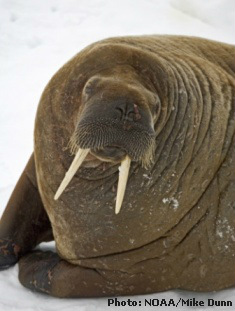“Wow,” Mr. Quinto said. “Can we go see the room where Tennessee died?”
“Tennessee” is the playwright Tennessee Williams, who lived and worked in the hotel for about 20 years until his death in 1983,
reportedly after choking on a plastic bottle cap.
The visit was something of a pilgrimage for Mr. Quinto, who is making
his Broadway debut later this month in “The Glass Menagerie,” Williams’s
first Broadway production.
Mr. Quinto, 36, was obliging a request to be interviewed at the Monkey
Bar, off the lobby of the Elysée. It was a favorite, convenient bar for
the playwright.
“I was reading about the hotel in anticipation of coming here,” Mr.
Quinto said. “Hume Cronyn and Jessica Tandy and Marlon Brando and
Lillian Gish, all of these amazing luminaries of the theater spent time
in this place.”
Seated at a corner red banquette, the actor — dressed in a mauve
T-shirt, jeans and high-top sneakers he admitted had been appropriated
from a friend — spotted a depiction of Tennessee Williams behind him in
the famous Edward Sorel mural that wraps around the restaurant. He
attempted to move a lamp for a better look. It was bolted down.
“Unreal. Unreal,” he said. “It’s a huge thing for me.”
The day before, Mr. Quinto had appeared at a Cantor Fitzgerald 9/11
benefit held at BGC Partners (its trading floor reminding him of the set
of his 2011 movie “Margin Call”), appeared in matinee and evening
performances of “Menagerie” and made it to the Standard, High Line hotel
for a
New York Fashion Week party. He said he was asleep by 3 a.m. “I’m good on six hours,” he said.
The play, which also stars Cherry Jones, is in previews and is to open Sept. 26. In
a glowing review of the Boston production earlier this year,
Ben Brantley of The New York Times wrote: “Mr. Quinto, best known for
his screen work, is the finest Tom I’ve ever seen, a defensive romantic,
sardonically in love with his own lush powers of description.”
Mr. Quinto, who studied acting at Carnegie Mellon, talked about developing the character of Tom, Williams’s given name.
“Tom is the most autobiographical character in his canon, so it became
clear to me right away that, as the point of entry, the more I could
learn about Tennessee and understand what he was trying to capture, and
the same time what he wanted to run away from, the better off I’d be,”
he said.
Mr. Quinto started with a biography by
Lyle Leverich, “Tom: The Unknown
Tennessee Williams,”
concentrating on the family dynamics depicted in the play among the
aging mother and her two adult, unmarried children.
“There is no shortage of works about the life of Tennessee, or works by
Tennessee or both,” he said with a laugh and a slight eye roll.
He moved on to the playwright’s memoirs, the first MGM screenplay of
“Menagerie” and all the versions of the short story that morphed into
the play.
“In the screenplay, there’s actually a scene where Tom goes to the
movies and meets a young girl and has a quixotic interaction with her,”
he said in his deep baritone. “It informs my understanding how Tom fills
his time not in the apartment. All of that is really exciting.”
Lunch — tomato soup and a grilled cheese sandwich — arrived. (Perfect on a rainy day, Mr. Quinto said.)
It got him talking about a scene in which the cast mimes the act of
having dinner (sans tableware and food) and yet communicates the bond of
that experience.
“The feeling of what it is to eat, the emotional relationships you have
with the people you are eating with, these are the things that are
important,” he said, “and the things that Tennessee was trying to
convey.”
In researching the character, Mr. Quinto, who came out as gay in 2011,
considered the struggles Williams had with his own sexuality.
“I think it is something that plagued Tennessee his whole life,
something he really wrestled with,” he said. “I don’t think it ever
fully resolved for him. I feel much more resolved in my own life.”
And, not surprisingly, Mr. Quinto considered how sexuality informed the character he plays.
“I think Tom knows that his relationship to alcohol and his constant
seeking of adventure, as he calls it in the play, belies a kind of
desire that he is not able to fully embrace,” he said.
After lunch, John Avina, the general manager of the Elysée, took Mr.
Quinto on a quick tour of the Tennessee Williams Suite, which is not the
playwright’s old rooms but the apartment of the former owner of the
property. There were plays on the bookshelves, photographs and a framed
letter from Williams to a friend who was to visit, which gave the name
and address of the hotel. Mr. Quinto read aloud: “I’ll probably still be
alone as my friend is having a vacation in Veracruz, Mexico. He is
attracted to sinister places.”
The actor politely asked to see the rooms where the writer had spent his
final days, but was told they were occupied. Mr. Avina handed him a
card, and said he would arrange for him to visit or stay on a night when
the play was dark.
“Thanks, man,” Mr. Quino said, heading to rehearsals. “I’ll definitely be in touch.”

























 Lamb of God
Lamb of God






